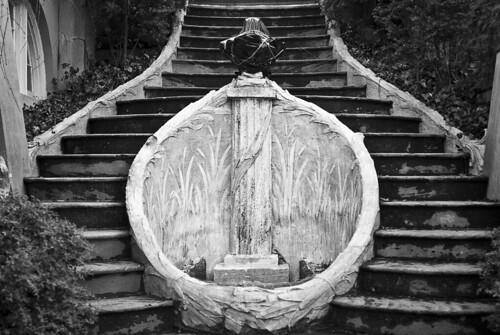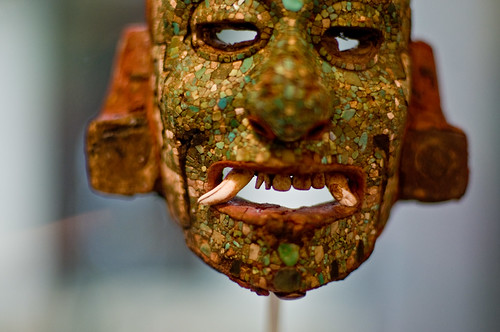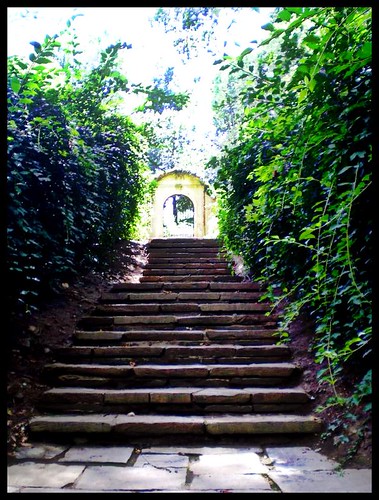
‘Stairs’
courtesy of ‘Amberture’
If you’re looking to escape from the Cherry Blossom hoards and find your own little piece of Washington DC for a few hours, the Dumbarton Oaks house, gardens and museum have your name on it.
In 1920, U.S. Foreign Service diplomat Robert Woods Bliss and his wife Mildred Barnes Bliss purchased a large portion of land and a 1801 Federal style house in the northern most section of Georgetown. The Blisses made significant architectural renovations and additions, such as the Dumbarton Oaks Research Library and Collection (DORCL) structure, which includes the 1963 Phillip Johnson designed Pre-Columbian Pavillion. And more recently DORCL has welcomed a new library in 2005 and an extensive renovation of the house and museum was completed in 2008.
The museum houses, amongst other things, the significant art collection amassed by the the Blisses during their State Department life overseas. This includes two fascinating collections of Byzantine and Pre-Columbian art and artifacts, as well as displays of tapestries, sculptures, paintings, and furniture dating from the fifteenth to the eighteenth centuries, which can be seen in the Music Room.

‘Dumbarton Oaks Museum – Smile – 4-11-09’
courtesy of ‘mosley.brian’
In 1940, the Blisses transferred ownership of the Dumbarton Oaks estate and their collection to Mr. Bliss’ alma mater Harvard University. However, they remained extremely active and continued to shape the institution, the collection, and the gardens, until their deaths in the 1960s. The estate is now managed by the trustees of Harvard.
The DORCL also houses a library containing over 100,000 volumes dedicated to landscape architecture, Byzantine and Pre-Columbian art. Access to the library is generally reserved for resident scholars, however the general public can apply for weekly reader or reader status.
‘Secret garden’
courtesy of ‘yostinator’
The approximately 10 acres on which the Dumbarton House and DORCL reside has change dramatically since the Bliss’ first purchased the estate. Mrs. Bliss worked closely with landscape gardener and architect Beatrix Farrand, who was the niece of Edith Wharton and long time friend of Henry James, from 1922 to 1947. The pair transformed the grounds with terraced gardens and vistas paired with informally planned open spaces. On the grounds, which are open to the public for a small fee, you’ll find the original greenhouse, a brook with miniature waterfalls, Lover’s Lane Pool, a formal Rose Garden, and many other serene and tucked away spots for you to enjoy. The gardens are opened March 15th through October 31st from 2-6pm, except Mondays. General admission is $8 and garden tours are offered daily at 2:15pm.
Of significant note, in 1944 the Dumbarton Oaks estate hosted the aptly named Dumbarton Oaks Conference that laid the foundation of the United Nations. Discussion included which nations would be invited as members, the formation of the United Nations Security Council, and the right of veto that would be given to the Security Council’s permanent members. The conference was followed up by the Yalta Conference in February 1945.
Additionally, the estate had a major Igor Stravinsky named after it, when Mr. Bliss commissioned Stravinsky to compose a concerto for his thirtieth wedding anniversary in 1938. The resulting “Dumbarton Oaks” concerto, aka “Concerto in E-flat,” is a tribute to the beauty and serenity that the Dumbarton Oaks estate imparts to every visitor.



Also, I believe starting next week, the House Collection opens a new special exhibit called “Scattered Evidence: Excavating Antioch-on-the-Orontes”.